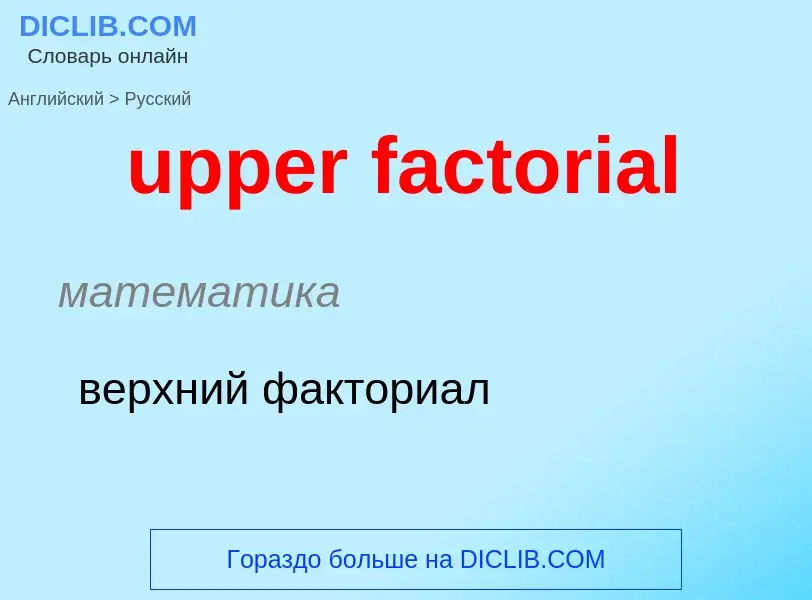Translation and analysis of words by ChatGPT artificial intelligence
On this page you can get a detailed analysis of a word or phrase, produced by the best artificial intelligence technology to date:
- how the word is used
- frequency of use
- it is used more often in oral or written speech
- word translation options
- usage examples (several phrases with translation)
- etymology
upper factorial - translation to russian
математика
верхний факториал
математика
растущий факториал
математика
факториальный многочлен
Definition
Wikipedia
In mathematics, the falling factorial (sometimes called the descending factorial, falling sequential product, or lower factorial) is defined as the polynomial
The rising factorial (sometimes called the Pochhammer function, Pochhammer polynomial, ascending factorial, rising sequential product, or upper factorial) is defined as
The value of each is taken to be 1 (an empty product) when n = 0 . These symbols are collectively called factorial powers.
The Pochhammer symbol, introduced by Leo August Pochhammer, is the notation (x)n , where n is a non-negative integer. It may represent either the rising or the falling factorial, with different articles and authors using different conventions. Pochhammer himself actually used (x)n with yet another meaning, namely to denote the binomial coefficient
In this article, the symbol (x)n is used to represent the falling factorial, and the symbol x(n) is used for the rising factorial. These conventions are used in combinatorics, although Knuth's underline and overline notations and are increasingly popular. In the theory of special functions (in particular the hypergeometric function) and in the standard reference work Abramowitz and Stegun, the Pochhammer symbol (x)n is used to represent the rising factorial.
When x is a positive integer, (x)n gives the number of n-permutations (sequences of distinct elements) from an x-element set, or equivalently the number of injective functions from a set of size n to a set of size x; while x(n) gives the number of partitions of a k-element set into x ordered sequences (possibly empty), or the number of ways to arrange k distinct flags on a row of x flagpoles.

